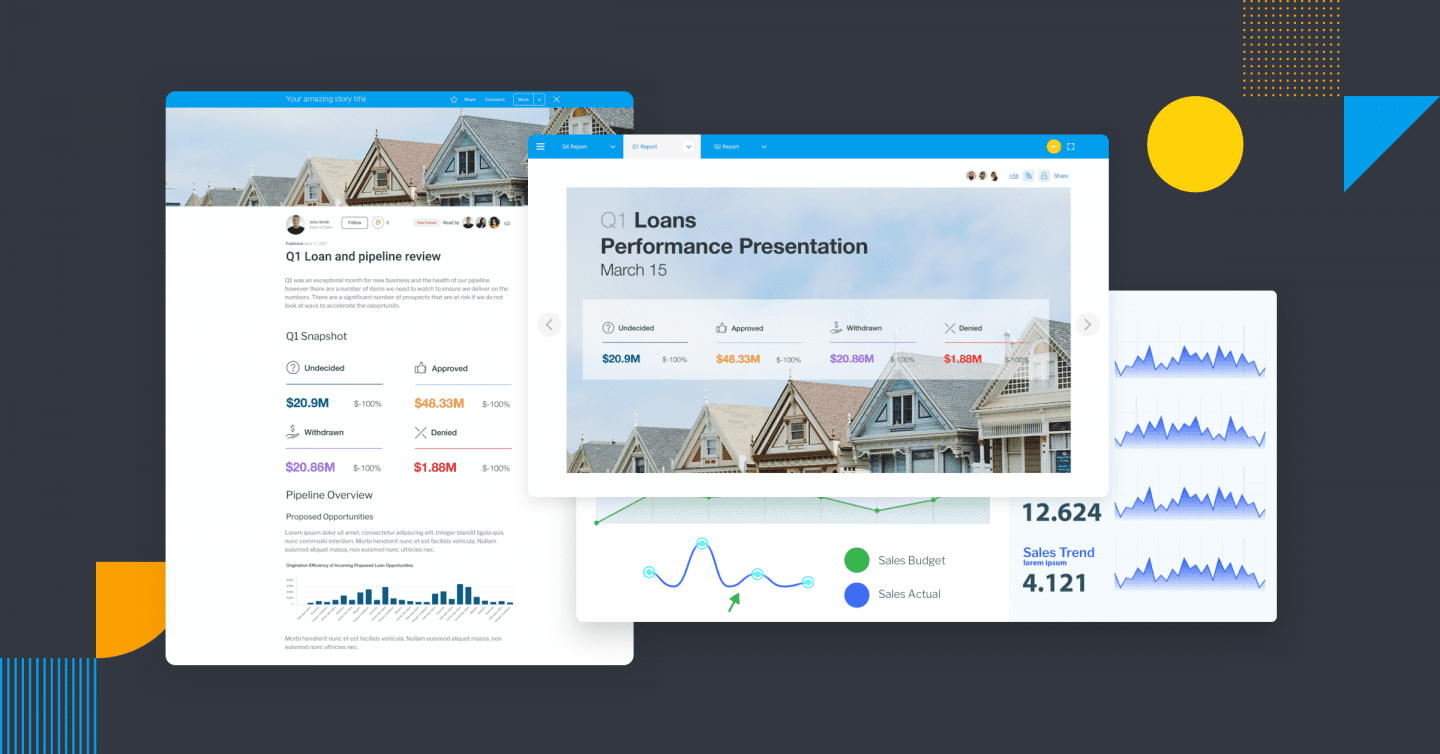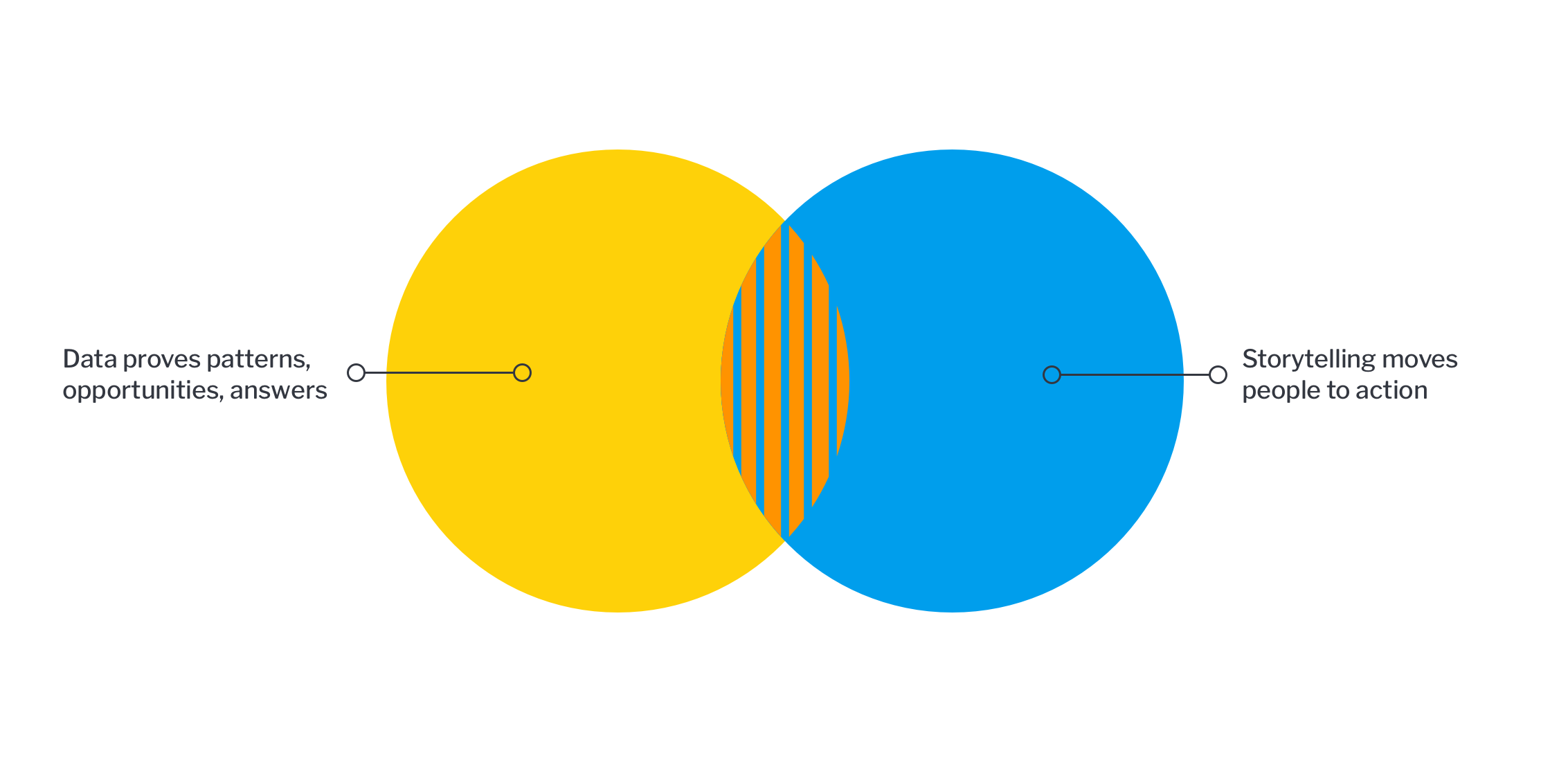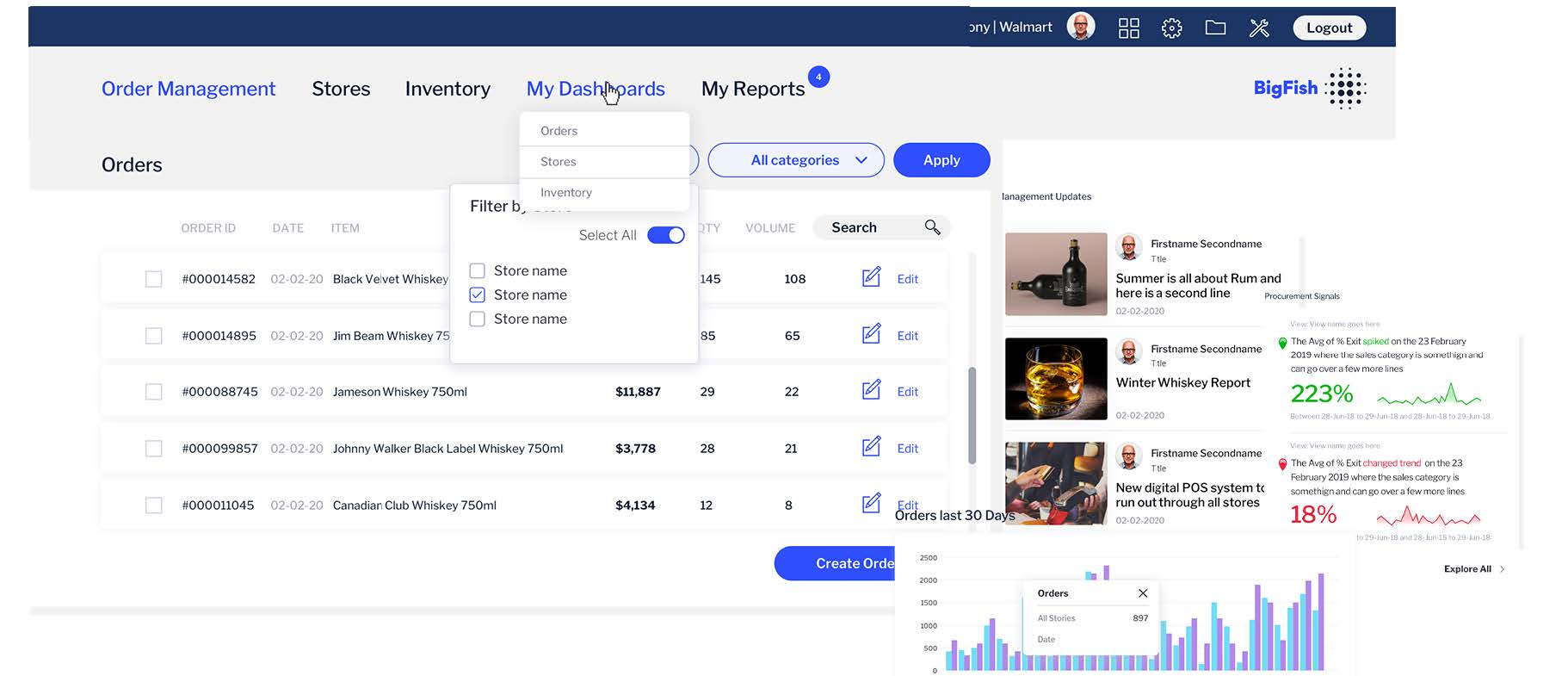
Data doesn't speak for itself: Why data storytelling is so important
“Letting the data speak for itself” is a well known phrase with a hard truth: Data presented on its own rarely communicates meaning for itself. For most people, it’s the context behind the numbers, the story, that helps us understand and care to act.
Almost all data is a recording of past events - what has happened before. People have to explore and analyze it to find historical truth, in the hopes it can reveal trends, inform the next direction to take, and act as a guide for the actions necessary to improve the future.
For analysts in an organization who can read data presented as is - on dashboards, reports, charts - this traditional analytical process may be enough to make sense. But not everyone can consume or understand data shown upfront, or extract value from it.
Helping everyone understand what’s happening and getting them invested in taking action to get toward your ideal state, then, can only occur when you use the right skills and right analytics tools to not only communicate the data well, but make it memorable.
This need is why data storytelling is so important right now - especially because telling stories with data will be the most widespread way of consuming our analytics by 2025.
 Regular business users may not get anything out of your in-depth dashboard filled with visualizations, but they may feel compelled to act after consuming a story with your personal perspective on a discovery that sheds light on the context behind the numbers.
Similarly, people who appreciate hard numbers over anecdotes will be convinced by a story that combines analysis with a detailed technical breakdown. A standard report may provide evidence, but it’s the opportunity for a longer-form narrative that inspires action.
Regular business users may not get anything out of your in-depth dashboard filled with visualizations, but they may feel compelled to act after consuming a story with your personal perspective on a discovery that sheds light on the context behind the numbers.
Similarly, people who appreciate hard numbers over anecdotes will be convinced by a story that combines analysis with a detailed technical breakdown. A standard report may provide evidence, but it’s the opportunity for a longer-form narrative that inspires action.
 But not all answers come from machine algorithms or automated alerts, nor are they always guaranteed to be easily understood. Oftentimes, the deepest insights are through sharing personal perspective, argument, and expertise. But combining these powerful augmented tools with a data story that unearths context only further increases your users’ ability to decisively act.
A comparison of regional sales performance generated by machine-Assisted Insights, for example, can help get a non-expert started on finding a pattern. But is it good? Is it expected? Which direction should you take? Practicing storytelling as an extension of the augmented process allows for users to weigh in with their commentary, and build further trust in the results.
But not all answers come from machine algorithms or automated alerts, nor are they always guaranteed to be easily understood. Oftentimes, the deepest insights are through sharing personal perspective, argument, and expertise. But combining these powerful augmented tools with a data story that unearths context only further increases your users’ ability to decisively act.
A comparison of regional sales performance generated by machine-Assisted Insights, for example, can help get a non-expert started on finding a pattern. But is it good? Is it expected? Which direction should you take? Practicing storytelling as an extension of the augmented process allows for users to weigh in with their commentary, and build further trust in the results.
7 reasons why data storytelling is a critical analytics practice
In this blog, we want to focus on the many reasons data storytelling is as important as any other modern analytics initiative in helping your users make decisions today.#1 - Storytelling accelerates the most from 'what' to 'why'
Firstly, to make data more useful for decision-making for people who aren’t experts, it must be given a clear and compelling voice. Problems and opportunities (the what) may just be numbers on a dashboard at this point; possibly interesting, but not clear for everyone on what to do next. Combining narrative with data is a great way for organizations to better explain the ‘why’ behind the results, and tell an engaging story of how an insight was discovered or conclusion was drawn, so everyone can connect with and understand why it’s important:- Why does this data point, pattern, trend, etc prove your point?
- Why is this data informing the next decision to take?
- Why should I care about it?
#2 - Narrative and data are sweet-talkers for change
When people better understand the ‘why’ - the context or results - the next step is getting them to change, influence, or inspire their next decision, and how they make it. The point of sharing findings from data is to move from identifying a problem or opportunity toward a resolution or action. But different audiences require different levels of evidence, and may only act if you persuade them to do so. Combining storytelling with data aids this process. Regular business users may not get anything out of your in-depth dashboard filled with visualizations, but they may feel compelled to act after consuming a story with your personal perspective on a discovery that sheds light on the context behind the numbers.
Similarly, people who appreciate hard numbers over anecdotes will be convinced by a story that combines analysis with a detailed technical breakdown. A standard report may provide evidence, but it’s the opportunity for a longer-form narrative that inspires action.
Regular business users may not get anything out of your in-depth dashboard filled with visualizations, but they may feel compelled to act after consuming a story with your personal perspective on a discovery that sheds light on the context behind the numbers.
Similarly, people who appreciate hard numbers over anecdotes will be convinced by a story that combines analysis with a detailed technical breakdown. A standard report may provide evidence, but it’s the opportunity for a longer-form narrative that inspires action.
#3 - Data stories help create a data-driven culture
Bringing data from operational dashboards, countless tables, and complex charts into a story isn’t just valuable for the added context it provides (which numbers on their own can’t), but in its ability to create a more data-driven culture throughout your organization. Many companies adopt embedded BI to not just have the latest tools, but to ensure everyone in the business gets on the same page around what's happening and why. Having a platform that provides in-built storytelling capabilities as part of the analytics experience means everyone in the business has tools to explain their findings, build a case for some course of action, and back up recommendations with detailed answers. Most importantly, it encourages a more data-driven mindset for everyone, experts or regular line-of-business users, when communicating new discoveries. Read more: How to create a data culture through data storytelling#4 - Data stories compliment automated, augmented insights
The importance of storytelling and narrative to explain the numbers and get people invested may seem like a core expectation from any analytics solution, but for many analytics users, it’s not as obvious as it seems - especially with so many augmented BI features taking the limelight. Today’s analytics solutions offer streamlined AI, automation, and machine learning capabilities, which open up new and amazing ways to analyze our data and find opportunities. From automated business monitoring to augmented analytics to contextual analytics, modern embedded BI platforms are augmenting how regular users search the numbers for answers. But not all answers come from machine algorithms or automated alerts, nor are they always guaranteed to be easily understood. Oftentimes, the deepest insights are through sharing personal perspective, argument, and expertise. But combining these powerful augmented tools with a data story that unearths context only further increases your users’ ability to decisively act.
A comparison of regional sales performance generated by machine-Assisted Insights, for example, can help get a non-expert started on finding a pattern. But is it good? Is it expected? Which direction should you take? Practicing storytelling as an extension of the augmented process allows for users to weigh in with their commentary, and build further trust in the results.
But not all answers come from machine algorithms or automated alerts, nor are they always guaranteed to be easily understood. Oftentimes, the deepest insights are through sharing personal perspective, argument, and expertise. But combining these powerful augmented tools with a data story that unearths context only further increases your users’ ability to decisively act.
A comparison of regional sales performance generated by machine-Assisted Insights, for example, can help get a non-expert started on finding a pattern. But is it good? Is it expected? Which direction should you take? Practicing storytelling as an extension of the augmented process allows for users to weigh in with their commentary, and build further trust in the results.